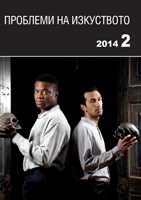Филмът „Ромео и Жулиета” на Франко Дзефирели като модел на филм мост
Franco Zeffirelli’s „Romeo and Juliet” as a crossover film model
Author(s): Ingeborg Bratoeva-DaraktchievaSubject(s): Cultural history
Published by: Институт за изследване на изкуствата, Българска академия на науките
Summary/Abstract: This paper examines Franco Zeffirelli’s adaptation of „Romeo and Juliet” (1968) from two perspectives: from the viewpoint of the crossover film development in the late 1960’s, and through the lens of the general discussion about literary adaptations on screen. The introduction of the text exposes this debates, relating to crossover film as a cultural form, from Thomas Elsaesser’s labeling it as a „form of cinematic prostitution”, towards a more balanced view to its capacity of making the important transition from minority to mainstream film-audiences. A short review of the experiments of Franco Zeffirelli with Shakespearian texts (on stage and on screen) underlines the unique contribution of the Italian director to the formation of a modern approach to literary adaptations. Adapting time-honored literary texts to the attitudes of a mass-media-dominated cinema audience, Zeffirelli developed a style of new realism, which affected the principles of cinema adaptations for the next decades. The core of the article offers an elaborate analysis of Zeffirelli ‘s film „Romeo and Juliet” (1968), a case-study of this remarkable model of crossover film. The review is based on examination of the principal elements of the movie, which distinguish it from the then established tradition of Shakespearian adaptations. The director demonstrates a skilled implementation of the entire visual potential of cinema, operating with different shots, spectacular angles, dramatic montage techniques, visualization of metaphors, authentic period details etc. In its conclusion, the paper underlines the correlation between this new developed style of literary adaptation and the outstanding cultural reception of the film.
Journal: Проблеми на изкуството
- Issue Year: 2014
- Issue No: 2
- Page Range: 36-39
- Page Count: 4
- Language: Bulgarian
- Content File-PDF

